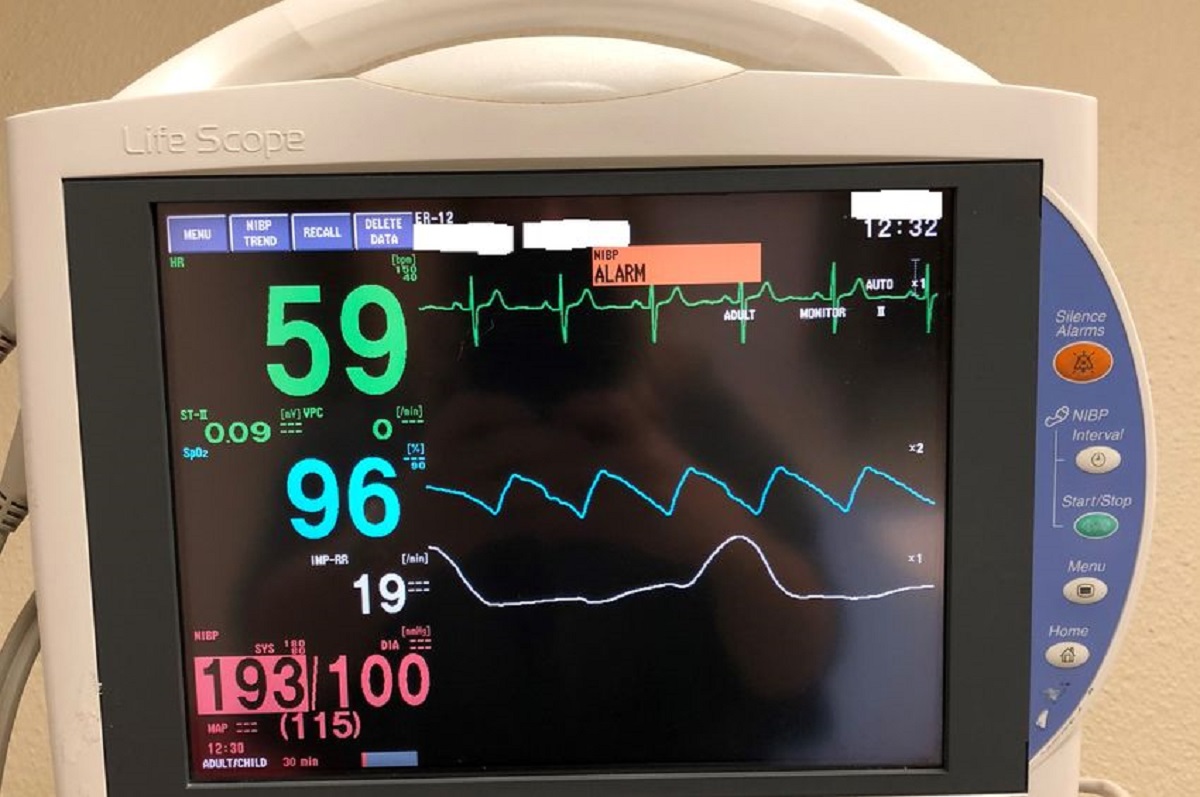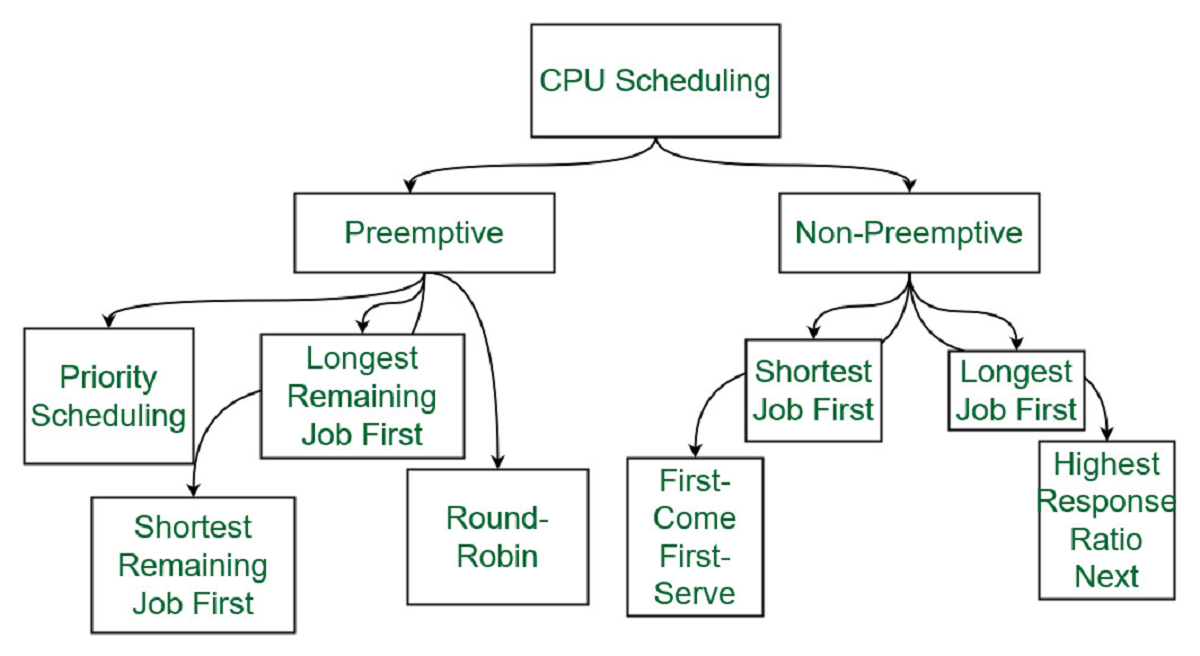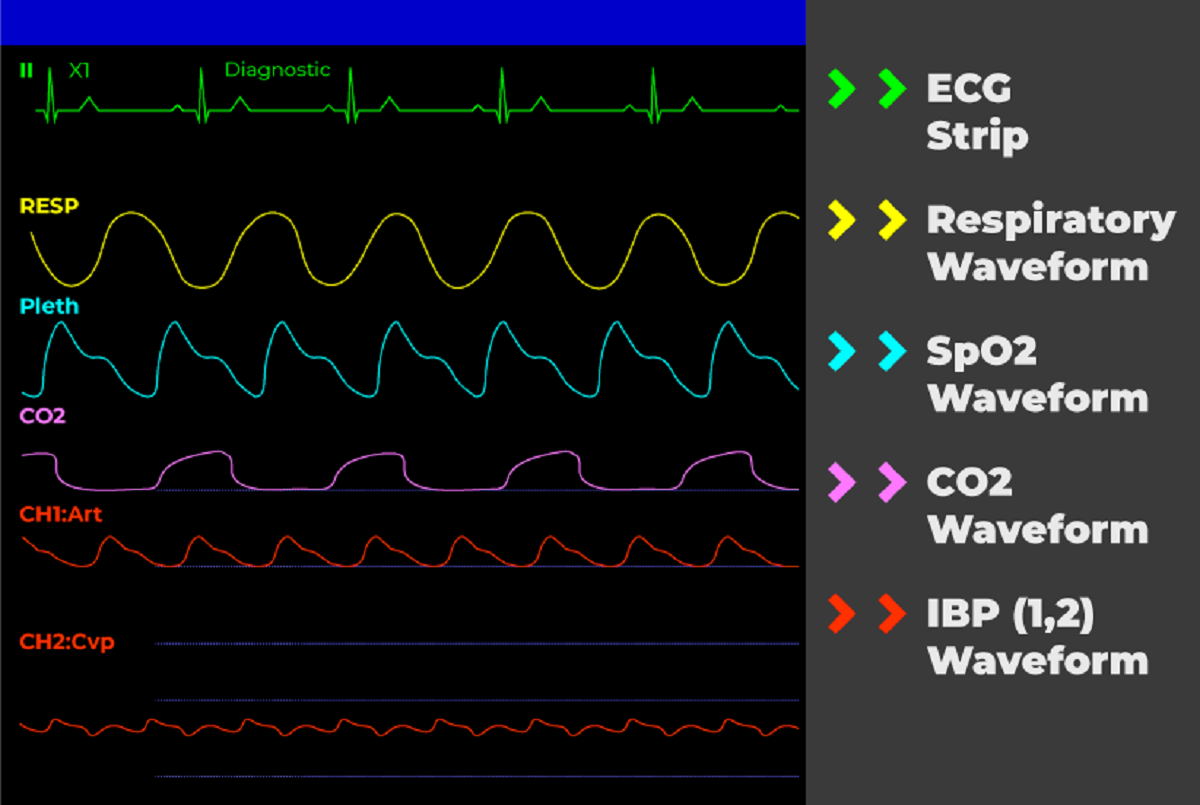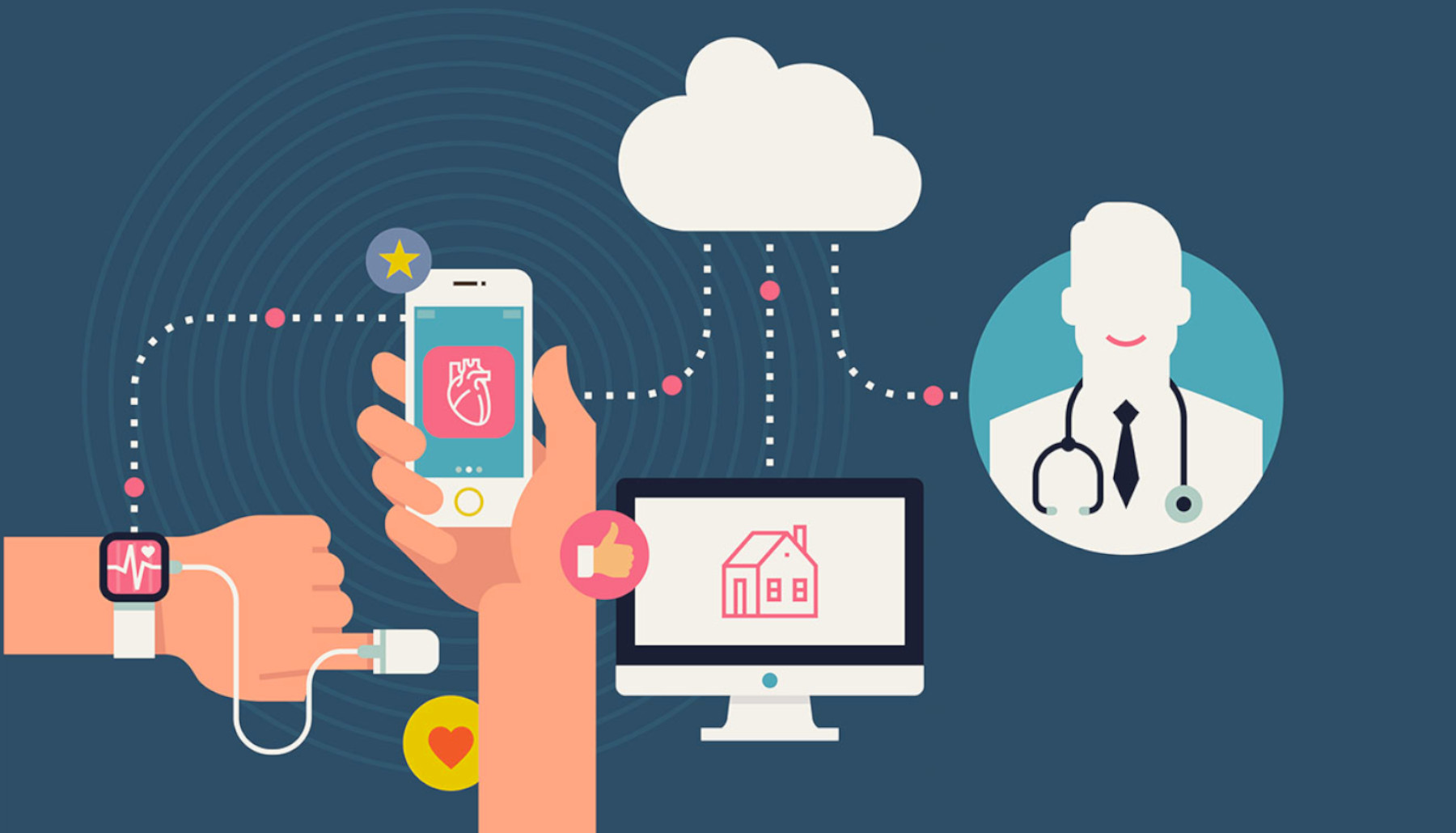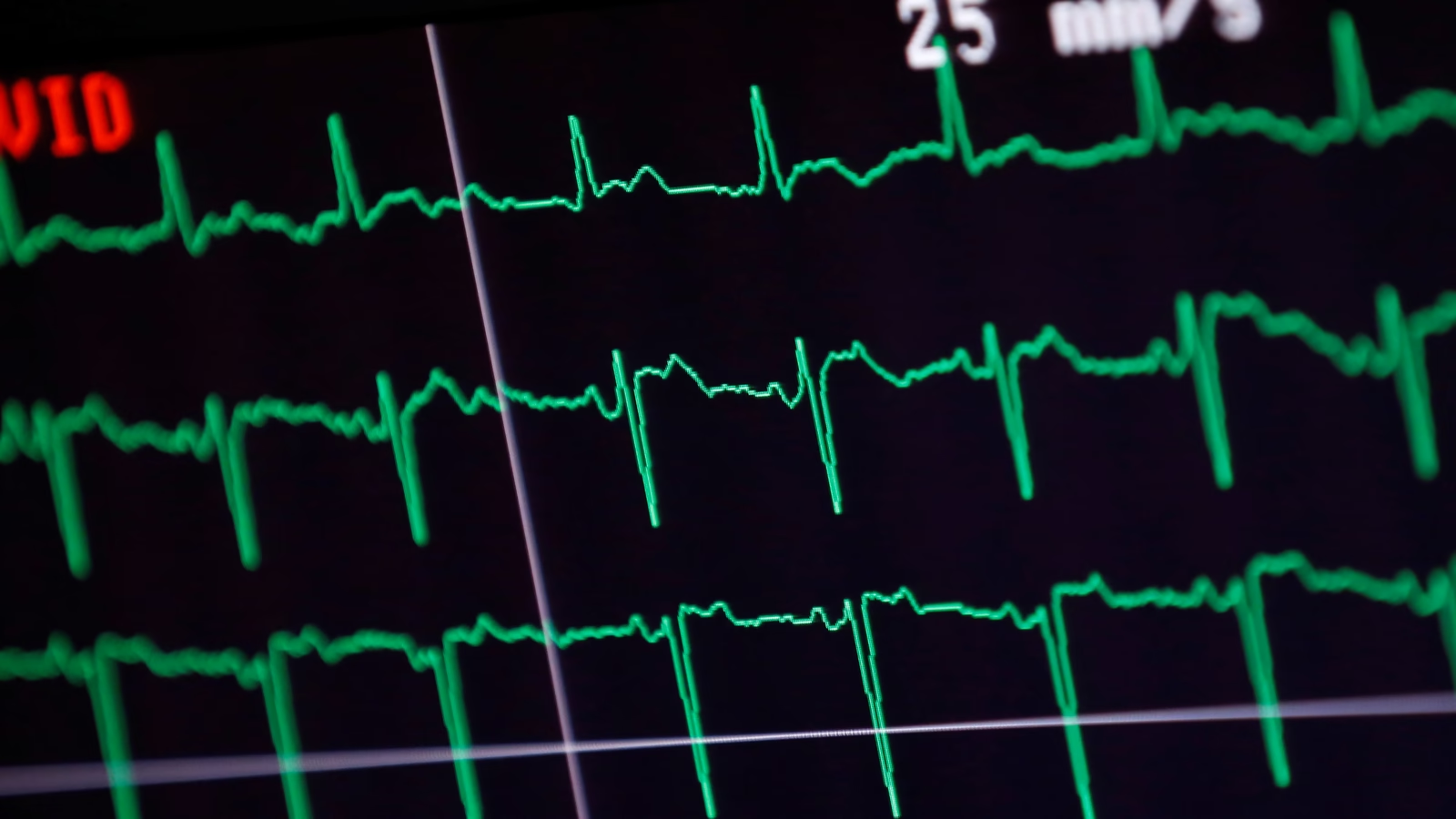Introduction
When it comes to monitoring a patient’s vital signs, healthcare professionals rely on a variety of tools and measurements to assess their condition. One essential parameter that is closely watched is respiratory rate, often abbreviated as RR. Respiratory rate refers to the number of breaths a person takes per minute, and it is a critical indicator of their respiratory function and overall well-being.
Monitoring respiratory rate plays a crucial role in detecting any potential abnormalities or complications early on, allowing healthcare providers to intervene promptly. This article will delve into the definition of RR on a hospital monitor, its importance, how it is measured, the normal range, abnormal readings, causes of abnormal RR, and the clinical applications of RR monitoring.
Understanding the significance of RR monitoring can help healthcare professionals provide better care and ensure the well-being of their patients. Additionally, knowledge of RR can provide everyday individuals with insight into their own respiratory health and the need for medical attention when necessary.
Let’s dive into the details of RR monitoring on hospital monitors and explore why it is a crucial aspect of patient care.
Definition of RR on Hospital Monitor
Respiratory rate (RR) is a vital sign measured on a hospital monitor that refers to the number of breaths a person takes in a minute. It represents the frequency at which the lungs expand and contract, allowing oxygen to enter the body and carbon dioxide to be expelled. Unlike other vital signs, such as heart rate and blood pressure, respiratory rate provides valuable insights into the functioning of the respiratory system.
On a hospital monitor, RR is typically displayed as a numeric value followed by the abbreviation “RR” or the word “breaths per minute.” It serves as a valuable indicator of a patient’s respiratory function and can help healthcare providers assess their overall health and response to treatment. By closely monitoring changes in RR, medical professionals can identify any respiratory distress or deterioration in a timely manner.
RR on a hospital monitor is measured using various monitoring devices. The most common method involves placing sensors or electrodes on the patient’s chest or abdomen to detect breathing movements. These sensors are connected to the monitor, which then calculates and displays the respiratory rate in real-time. Additionally, some advanced monitors can also provide graphical representations of the breathing pattern, aiding in the assessment and diagnosis of respiratory disorders.
It is important to note that RR on a hospital monitor is just one component of a comprehensive evaluation of a patient’s respiratory status. It should be considered alongside other clinical signs, such as oxygen saturation levels, chest auscultation, and the patient’s subjective symptoms, to form a complete picture of their respiratory health.
In the next section, we will explore why monitoring RR is of utmost importance in the healthcare setting and how it can greatly impact patient care.
Importance of Monitoring RR
Monitoring respiratory rate (RR) holds significant importance in healthcare settings as it provides valuable information about a patient’s respiratory function and overall well-being. Here are several key reasons highlighting the importance of monitoring RR:
- Early Detection of Respiratory Distress: Changes in RR can be one of the earliest indicators of respiratory distress or deterioration. A sudden increase or decrease in RR may signify underlying respiratory problems, such as lung infections, asthma exacerbation, or respiratory failure. By closely monitoring RR, healthcare providers can promptly identify these changes, enabling early intervention and preventing further complications.
- Evaluation of Treatment Effectiveness: Monitoring RR allows healthcare professionals to assess the effectiveness of therapeutic interventions for respiratory conditions. For instance, if a patient is receiving treatment for a respiratory infection, monitoring RR over time can help determine if the treatment is helping to improve their respiratory function or if additional interventions are necessary.
- Guiding Respiratory Support: In critical care settings, such as intensive care units or during surgeries, patients may require various forms of respiratory support, such as mechanical ventilation. Regular RR monitoring is crucial in determining the appropriate settings and adjustments for these interventions. Healthcare providers can titrate ventilator settings based on changes in the patient’s RR, ensuring optimal oxygenation and ventilation.
- Identifying Respiratory Disorders: Abnormalities in RR can provide valuable clues for diagnosing underlying respiratory disorders. A consistently elevated RR may indicate conditions like chronic obstructive pulmonary disease (COPD), while a decreased RR could point towards respiratory depression caused by medication or neurological impairment. By paying attention to changes in RR, healthcare professionals can initiate further investigations and develop targeted treatment plans.
- Predicting Patient Outcomes: RR monitoring is often used as a prognostic indicator for patients with severe respiratory conditions. Studies have shown that an elevated RR, particularly in critically ill patients, is associated with a higher mortality risk. By continuously monitoring RR, healthcare providers can promptly identify worsening respiratory function and take necessary measures to improve patient outcomes.
The significance of RR monitoring cannot be overstated. It provides crucial insights into a patient’s respiratory status, allowing healthcare professionals to intervene promptly and provide appropriate care. Next, we will discuss how RR is measured and the normal range of respiratory rate.
How is RR Measured?
Respiratory rate (RR) is measured by observing and counting the number of breaths a person takes in one minute. Healthcare professionals can use several methods to measure RR, depending on the patient’s condition and available equipment. Here are the common ways RR is measured:
- Manual Counting: This is the simplest and most basic method of measuring RR. The healthcare provider visually observes the rise and fall of the patient’s chest and counts the number of breaths over a specific time interval, often one minute. Manual counting can be done using a watch or a clock with a second hand. However, it requires the observer’s full attention and may not be feasible in situations where continuous monitoring is required.
- Oximetry: Pulse oximetry, a non-invasive method to measure blood oxygen saturation levels, can also provide an indirect measure of RR. Many pulse oximeters have built-in algorithms that estimate RR based on changes in oxygen saturation levels. The device uses a sensor placed on the patient’s fingertip, toe, or earlobe to measure the oxygen saturation and derive the RR.
- Respiratory Rate Monitors: Various wearable devices and monitors are available that can provide continuous and real-time RR measurements. These devices typically use sensors placed on the chest, abdomen, or upper arm to detect breathing movements or changes in pressure. The data is then transmitted wirelessly to a monitor or smartphone application, allowing healthcare professionals to track RR trends over time.
- Ventilator Monitoring: In patients who require mechanical ventilation, the ventilator machine itself measures and displays the RR. It utilizes sensors incorporated within the respiratory circuit to detect changes in pressure or airflow, providing an accurate measurement of RR. The ventilator monitor displays the RR alongside other respiratory parameters for continuous assessment.
The chosen method for measuring RR depends on the patient’s condition, the level of monitoring required, and the available resources. Continuous monitoring with wearable devices or ventilator-integrated measurements offers advantages in critical care settings, where frequent assessment is necessary.
In the next section, we will explore the normal range of RR and the significance of deviations from this range.
Normal Range of RR
The normal respiratory rate (RR) varies depending on a person’s age, physical activity level, and overall health. In general, the normal range of RR for adults at rest is between 12 to 20 breaths per minute. However, it is important to note that individual differences and certain factors can influence the respiratory rate.
Children tend to have higher respiratory rates than adults. Infants have the highest respiratory rates, with a normal range of 30 to 40 breaths per minute. As children grow older, their RR gradually decreases, reaching the adult range by adolescence. It is crucial for healthcare professionals to consider age-specific reference ranges when monitoring RR in pediatric patients.
Physical activity can also influence RR. During exercise or strenuous activity, the body requires more oxygen, leading to an increase in RR. This allows for efficient oxygen exchange in the lungs and facilitates the removal of carbon dioxide. As the activity level decreases, the respiratory rate returns to the normal resting range.
Several factors can cause temporary deviations from the normal range of RR. Pain, anxiety, fever, certain medications, and medical conditions such as respiratory infections can all lead to an increase in RR. Conversely, sedatives, opioids, and certain neurological conditions may cause a decrease in respiratory rate. It is important for healthcare providers to consider these factors when assessing a patient’s respiratory status.
Furthermore, individual variations can also exist within the normal range of RR. Some individuals may naturally have a slightly higher or lower respiratory rate without any underlying health concerns. However, significant deviations from the normal range, persistently elevated or low RR, or sudden changes warrant closer evaluation and medical attention.
Regular monitoring of RR helps healthcare professionals establish a baseline for each patient and track any significant changes over time. By understanding the normal range and recognizing abnormal readings, healthcare providers can promptly identify potential respiratory issues and initiate appropriate interventions.
In the following section, we will explore the causes of abnormal RR readings and the importance of detecting these deviations in patient care.
Abnormal RR Readings
Abnormal respiratory rate (RR) readings can serve as an alert for underlying respiratory or systemic problems and require careful evaluation. Here are some common abnormal RR readings:
- Tachypnea: Tachypnea refers to a persistently elevated respiratory rate, often above the normal range. It can be caused by various factors, including respiratory infections, fever, metabolic disorders, heart failure, anxiety, or certain medications. Tachypnea is the body’s response to an increased demand for oxygen or an attempt to eliminate excess carbon dioxide.
- Bradypnea: Bradypnea is characterized by a persistently decreased respiratory rate, typically below the normal range. It may occur due to medications, neurological conditions, obstructive sleep apnea, or metabolic disorders. Bradypnea can result in inadequate oxygenation, leading to fatigue, drowsiness, or impaired cognitive function.
- Apnea: Apnea refers to the absence of breathing. It can occur for several seconds to minutes and can be a sign of respiratory distress, respiratory arrest, or certain sleep disorders. Central sleep apnea, obstructive sleep apnea, or other underlying conditions can cause recurring episodes of apnea, necessitating medical intervention.
- Respiratory Distress: Rapid, uneven, or labored breathing that indicates respiratory distress is another form of abnormal RR. It may be accompanied by the use of accessory respiratory muscles and retraction of the chest or neck. This type of abnormal RR often indicates an acute respiratory problem or underlying lung disease.
Detection of abnormal RR readings is crucial as it may signify an underlying respiratory compromise or systemic illness. Healthcare providers carefully analyze the patient’s clinical presentation, other vital signs, medical history, and physical examination findings to determine the cause and appropriate course of action.
In some cases, further diagnostic tests such as chest X-rays, blood gas analysis, pulmonary function tests, or laboratory investigations may be necessary to identify the underlying cause of abnormal RR readings and guide appropriate treatment.
In the next section, we will delve into the various factors that can contribute to abnormal RR readings and their potential implications for patient health.
Causes of Abnormal RR
Abnormal respiratory rate (RR) can be caused by various factors, ranging from respiratory conditions to systemic illnesses. Identifying the underlying cause of abnormal RR is vital in determining appropriate treatment. Here are some common causes of abnormal RR:
- Respiratory Infections: Respiratory infections, such as pneumonia, bronchitis, or influenza, can lead to an increased RR as the body tries to eliminate pathogens and maintain adequate oxygenation. In severe cases, respiratory distress may occur, resulting in rapid or labored breathing.
- Obstructive Lung Diseases: Conditions like asthma, chronic obstructive pulmonary disease (COPD), or bronchiolitis can cause wheezing, shortness of breath, and increased RR. Inflammatory processes, bronchial constriction, or mucus accumulation obstruct airflow, leading to respiratory distress.
- Anxiety and Panic Disorders: Psychological factors can also impact RR. Anxiety, panic disorders, or acute stress can trigger rapid and shallow breathing patterns, leading to an elevated RR. Managing the underlying psychological condition is essential in restoring normal respiratory function.
- Medications and Drugs: Certain medications, such as opioids, sedatives, or muscle relaxants, can depress the respiratory center in the brain, causing a decrease in RR. Conversely, some drugs or stimulants can increase RR. Illicit substances like cocaine or amphetamines, as well as some prescription medications, may induce tachypnea.
- Metabolic Disorders: Metabolic conditions, such as diabetic ketoacidosis or metabolic acidosis, can lead to changes in RR. The body compensates for the imbalances in acid-base levels by altering breathing patterns, resulting in abnormal RR readings.
- Neurological Disorders: Neurological conditions like brainstem lesions, stroke, or neurodegenerative disorders can affect the neural control of respiration. These disruptions can manifest as irregular breathing patterns, abnormal RR, or even episodes of apnea.
- Cardiovascular Diseases: Some cardiovascular diseases, such as congestive heart failure or pulmonary embolism, can affect respiratory function and cause abnormal RR. Fluid retention, decreased oxygenation, or impaired cardiac output may result in tachypnea or respiratory distress.
These are just a few examples of the myriad of conditions that can lead to abnormal RR. It is important to note that abnormal RR readings should be evaluated in the context of the patient’s overall clinical presentation, including other abnormal vital signs, symptoms, and medical history. This comprehensive assessment helps healthcare providers determine the cause and formulate an appropriate treatment plan.
In the next section, we will explore the clinical applications and significance of RR monitoring in various healthcare settings.
Clinical Applications of RR Monitoring
Respiratory rate (RR) monitoring has several clinical applications across healthcare settings. Healthcare professionals utilize RR measurements to assess respiratory function, guide treatment decisions, and monitor patient stability. Here are some significant clinical applications of RR monitoring:
- Assessment of Respiratory Status: RR monitoring provides crucial information about a patient’s respiratory status. It helps healthcare providers assess the adequacy of ventilation and oxygenation, especially in critically ill or post-surgical patients. Changes in RR can serve as an early indicator of deteriorating respiratory function, allowing for prompt intervention.
- Identification of Respiratory Distress: Respiratory distress is often accompanied by abnormal RR, including tachypnea, bradypnea, or use of accessory muscles. Continuous RR monitoring helps identify signs of distress, enabling healthcare providers to intervene quickly and manage the underlying cause.
- Titration of Oxygen Therapy: RR monitoring assists in determining the appropriate oxygen therapy for patients with respiratory conditions. By closely monitoring RR alongside oxygen saturation levels, healthcare providers can adjust the delivery of supplemental oxygen to meet the patient’s needs and achieve optimal oxygenation.
- Evaluation of Treatment Response: RR monitoring helps assess the response to various treatment modalities. For instance, in patients with respiratory infections, monitoring RR can help determine the effectiveness of antibiotic therapy. A decrease in RR over time indicates improvement, while persistent or increasing RR may necessitate reevaluation of the treatment plan.
- Indication for Respiratory Support: Abnormal RR readings can guide healthcare providers in deciding when respiratory support is necessary. Patients with severely elevated RR or respiratory distress may require interventions like non-invasive ventilation, mechanical ventilation, or supplemental oxygen to alleviate respiratory strain and prevent complications.
- Prognostic Indicator: RR monitoring can serve as a prognostic indicator for patients with severe respiratory conditions. Elevated RR, particularly in critically ill patients, is associated with an increased risk of mortality. Regular monitoring helps track changes in RR and provides valuable information for predicting patient outcomes.
RR monitoring is crucial across various healthcare settings, including hospitals, intensive care units, emergency departments, and outpatient clinics. It aids in the early recognition of respiratory distress, guides treatment decisions, and improves patient outcomes. By closely monitoring RR, healthcare providers can respond proactively to changes in respiratory function and provide timely interventions.
In the final section, we will summarize the key points discussed and emphasize the importance of RR monitoring in patient care.
Conclusion
Respiratory rate (RR) monitoring is a crucial aspect of patient care, providing valuable insights into respiratory function and overall health. By assessing a patient’s RR, healthcare professionals can detect early signs of respiratory distress, evaluate treatment effectiveness, and guide respiratory support decisions.
RR is measured by observing the number of breaths a person takes per minute, and it is displayed on hospital monitors as a numeric value followed by the abbreviation “RR” or “breaths per minute.” It is important to consider age-specific reference ranges and factors such as physical activity level when interpreting RR readings.
Abnormal RR readings can indicate underlying respiratory, neurological, cardiovascular, or systemic conditions. Prompt evaluation of abnormal RR is essential in identifying the cause, initiating appropriate treatment, and preventing further complications.
RR monitoring has several clinical applications, including the assessment of respiratory status, identification of respiratory distress, titration of oxygen therapy, evaluation of treatment response, indication for respiratory support, and as a prognostic indicator. Continuous monitoring of RR allows for early intervention and improves patient outcomes across various healthcare settings.
In conclusion, RR monitoring plays a vital role in patient care. Its importance lies in providing valuable insights into respiratory function, guiding treatment decisions, and ensuring the well-being of patients. By closely monitoring RR, healthcare professionals can promptly identify respiratory abnormalities and initiate appropriate interventions, ultimately improving patient outcomes and overall quality of care.







